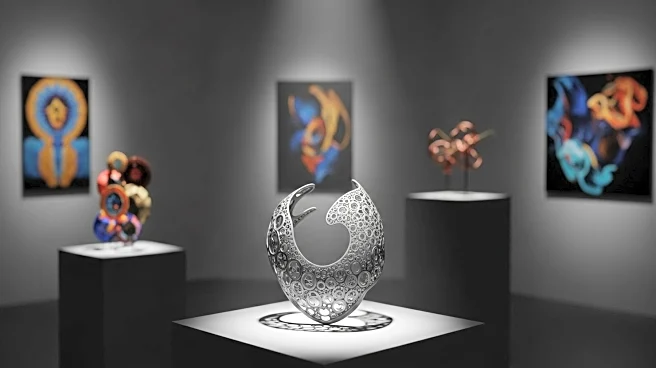What is the story about?
What's Happening?
The Museum of Arts and Design in New York City is hosting a new exhibition titled 'Douriean Fletcher: Jewelry of the Afrofuture,' which opens this Saturday and will run until March 15, 2026. This exhibition marks the first major museum showcase for designer Douriean Fletcher, known for her intricate jewelry work featured in films such as 'Black Panther' and 'Wakanda Forever.' The exhibition highlights Fletcher's sculptural pieces crafted from materials like brass, gold, shells, and semi-precious stones. These works explore themes of Black identity, spirituality, and Afrofuturism, aiming to connect ancestral technologies with future possibilities through adornment.
Why It's Important?
This exhibition is significant as it brings attention to the intersection of art, culture, and identity, particularly within the context of Afrofuturism. By showcasing Fletcher's work, the Museum of Arts and Design is highlighting the importance of Black cultural narratives and their influence on contemporary art and design. The exhibition not only celebrates Fletcher's contributions to film and fashion but also emphasizes the broader cultural movement of Afrofuturism, which seeks to reimagine the future through a Black cultural lens. This can inspire new dialogues around identity, heritage, and innovation in the arts.
What's Next?
As the exhibition runs until March 2026, it is expected to attract a diverse audience interested in art, fashion, and cultural studies. The showcase may also spark further interest in Afrofuturism and its applications in various creative fields. Additionally, it could lead to more opportunities for Fletcher and similar artists to present their work in other prestigious venues, further expanding the reach and impact of Afrofuturistic art.
Beyond the Headlines
The exhibition also raises questions about the role of museums in promoting diverse cultural narratives and the importance of representation in the arts. By featuring Fletcher's work, the Museum of Arts and Design is contributing to a broader movement towards inclusivity and diversity in the art world. This could encourage other institutions to follow suit, leading to a more equitable representation of different cultural perspectives in art exhibitions.
AI Generated Content
Do you find this article useful?















